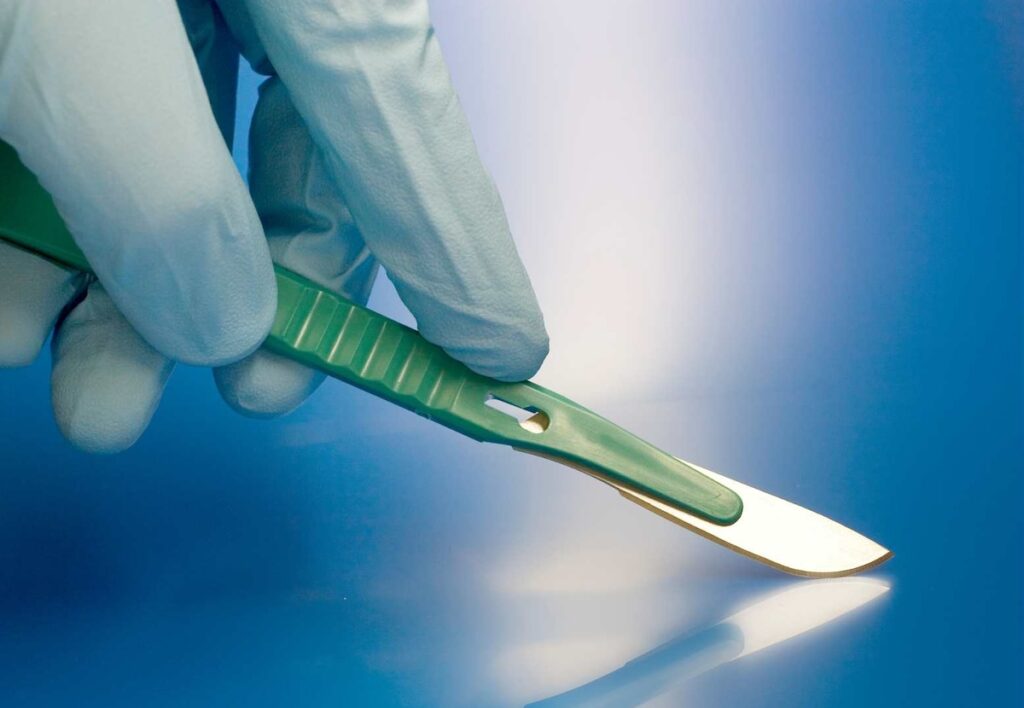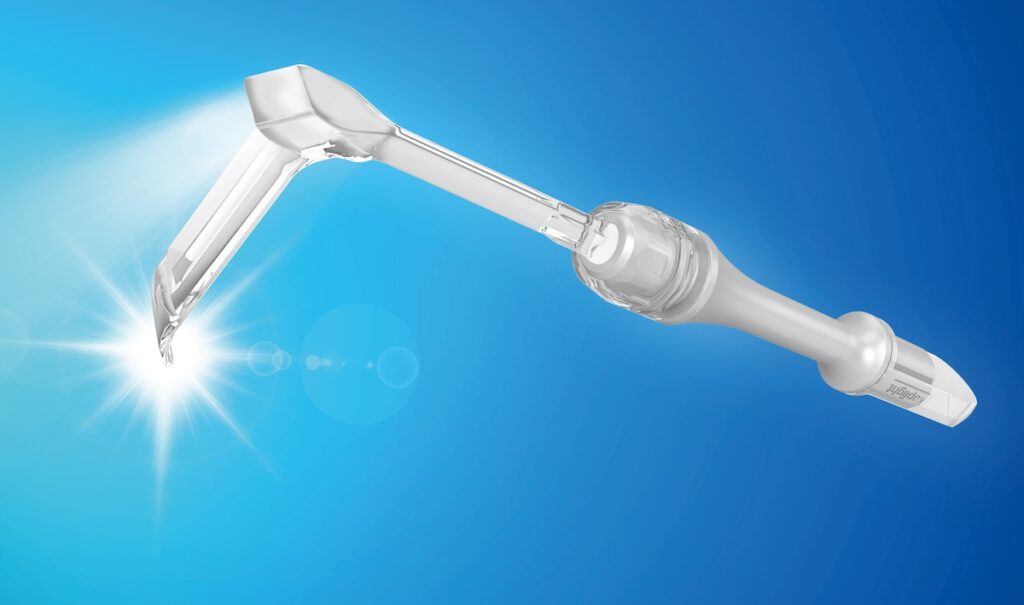Disposable surgical instruments are compelling alternatives to reusable instruments in the operating room. As tools typically for single use, disposable instruments don’t need to be sterilized. This aspect promotes surgical safety and cost-effectiveness. New materials are increasing of disposable instruments for surgery, though they have, in fact, been around for over a century.
This article explores the history of disposable surgical instruments, their types, materials, and the reasons why they are so widely used.
A brief history of disposable surgical instruments
The Food and Drug Administration (FDA) defines disposable instruments as “instruments limited to a single patient and procedure.”
Instruments coined as disposable first emerged to increase surgical efficiency. In the latter 20th century, they gained traction as tools that could combat contamination and cut sterilization costs.
The first truly disposable scalpel was introduced in 1914 by Morgan Parker after King Gillette(s invention of the “safety razor.” It consisted of a two-piece scalpel with a handle and a removable steel blade. The disposable scalpel increased stability and sharpness while offering the option of exchanging blades between uses. It paved the way for future models of disposable instruments.
Over the next decades, single-use versions of cannulas, scissors, and forceps became available. The popularity of disposable instruments took off with the fear of transmission of diseases, such as Creutzfeldt–Jakob (mad cow disease), AIDS, and surgical site infections.
Today, disposable instruments made of metals, plastics, or ceramics are present in almost every operating room. They have advanced in performance and sustainability; yet, their benefits over traditional, reusable instruments are still debated.
Scalpels
Scalpels are surgical knives that make tissue incisions. They can be disposable with detachable or attached blades or reusable with blades attached.
Unlike reusable scalpels, disposable ones don’t undergo sterilization. The handle of a disposable scalpel is made of steel forgings or plastic polymers (such as polystyrene), while the blade itself is stainless steel or titanium. Zirconium nitride and diamond are among newer materials being introduced.

The advantages of disposable scalpels over reusable ones include:
- Consistently sharp (don’t wear out)
- Lightweight
- Easier to handle
- Less likely to cause site infections
- More affordable
Disposable scalpels with blades attached are less likely to cause sharp injuries because they’re discarded entirely after use.
Despite their advantages, many surgeons still prefer the feel of the heavy metal handles of reusable scalpels.
Forceps
Forceps grasp, retract, and hold tissue firmly in place. They can be disposable or reusable.
Disposable forceps are single-use instruments made from plastics, stainless steel, or lightweight metal alloys. Reusable forceps are usually made of stainless steel or titanium.
The main pros of disposable forceps are:
- Pre-sterile
- Don’t wear out
- Convenient
- Unlikely to contaminate and cause infections
- Time-efficient
However, single-use forceps often lack the precision and durability of their reusable counterparts, making them less appropriate for long, precise surgeries.
They may also be less cost-efficient than reusable forceps in large hospital settings with more surgeries. In addition to these cons, discarding single-use forceps may cause considerable pollution to the environment.
The pros and cons of disposable forceps also apply to other single-use instruments that manipulate or secure tissue, such as graspers, tweezers, or clamps.
Scissors
Surgical scissors cut sutures, dressings, and tissue. Like many surgical instruments, surgical scissors can be disposable or reusable. They have various functional designs, such as straight, curved, and angled.
Disposable surgical scissors are made of medical-grade stainless steel or high-strength plastics. They were devised to reduce the risk of cross-contamination. The fact that they are single-use means they do not need to be sterilized and maintained to stay sharp and effective.
Disposable scissors have disadvantages, too. In the long run, they are much more harmful to the environment than reusable scissors, according to a study from Germany. This might be true for both plastic and metal single-use scissors. The same study states that disposable surgical scissors may also be less cost-effective than the scissors that undergo sterilization thousands of times.
Suction tips
Suction tips are used with suction or aspiration devices—tools that remove fluids and debris during surgical procedures. They’re made of silicone or plastic; they come in various sizes and shapes to suit different patients and surgeries. They can be disposable or reusable.
The primary advantages of disposable suction tips include the following:
- Low cost
- Reduced risk of contamination and infections
- Prevention of cleaning processes
Various studies on bacterial contamination from suction systems in orthopedic surgery and heart surgery have emphasized the importance of single-use suction tips. However, the increased waste and noise pollution associated with them remain valid concerns.
Retractors or retractor blades
Surgical retractors hold back tissues and separate the edges of incisions, providing surgeons with a clear view of the internal organs and operating field during surgery. Surgical retractors are typically self-retaining or handheld. Self-retaining retractors are fixed in place and hold the tissue by themselves, whereas a surgeon or surgical assistant manually holds and manipulates handheld retractors.
Traditional retractors are made of sturdy metal to withstand the necessary force, but modern surgical retractors can be disposable or reusable. Disposable retractors are made of plastics or lightweight metals, while reusable retractors are typically stainless steel. Unlike reusable retractors, disposable retractors are discarded after use. Thus, they may help avoid surgical site infections.

Single-use retractors are generally less durable and strong, and cannot do the heavy work of a retractor such a Deaver, but smaller, handheld devices can be both durable and effective. They can be used in precise surgeries, such as eye surgeries, inguinal hernia repair, arteriovenous fistula surgeries, and gynecological surgeries.
Notably, the Yasui koplight, a modern plastic handheld retractor from Japan, adds a lighting function that’s otherwise impossible with a conventional steel retractor.
Trocars and other laparoscopic instruments
Trocars are used during laparoscopy (minimally invasive surgery) to create small incisions in the skin and outer tissue layers. That can also withdraw fluids from the body cavity.
Disposable trocars are usually made of plastic. They contain a valve that allows cannulas and other instruments to pass through. Reusable trocars are stainless steel and are sterilized after use.
Disposable trocars may reduce the likelihood of visceral injury during their insertion through the skin. This is a major concern associated with reusable trocars. Reusable trocars also may suffer from microscopic damage to their structure from repetitive use. This can make them less precise and effective.
Other advantages of these single-use instruments include a reduced risk of infection and the elimination of sterilization costs. Because disposable trocars are typically thrown away after use, they increase the risk of environmental harm.
That said, the cost-effectiveness of single-use laparoscopic instruments compared with reusable instruments is unclear. Your intuition might suggest that discarding cheaper instruments can cut costs, but laparoscopic instruments are generally more expensive than those used in open surgery. A study from Minimally Invasive Surgery found that reusable instruments (instead of single-use instruments) substantially reduce laparoscopic surgery costs.
Suture removal kits
Suture removal kits contain the necessary instruments and supplies to safely remove sutures, including sterile scissors or a blade and forceps. These instruments are made of lightweight plastics or metals and packaged together for single-use applications.
The pros of using disposable suture removal kits include the following:
- Sterility
- Elimination of instrument reprocessing
- Time conservation
- Convenience and practicality
- Infection control
- Cost-effectiveness
The main disadvantage of single-use kits is related to the large waste production generated from their disposal.

